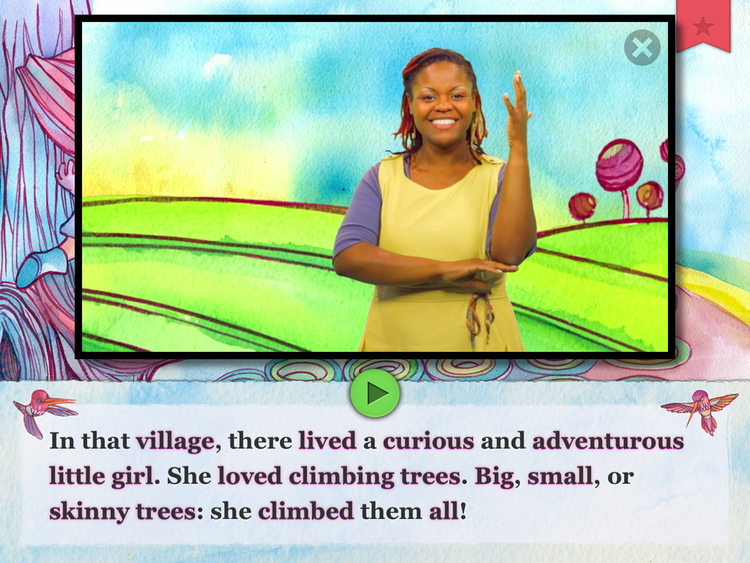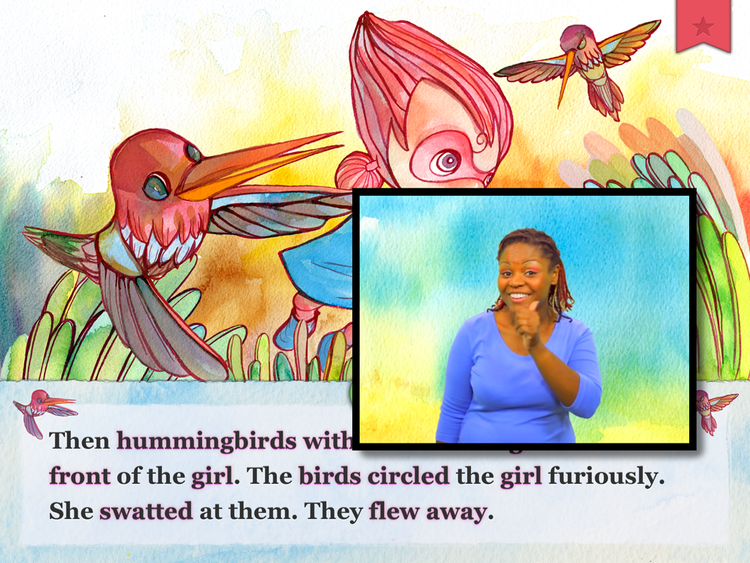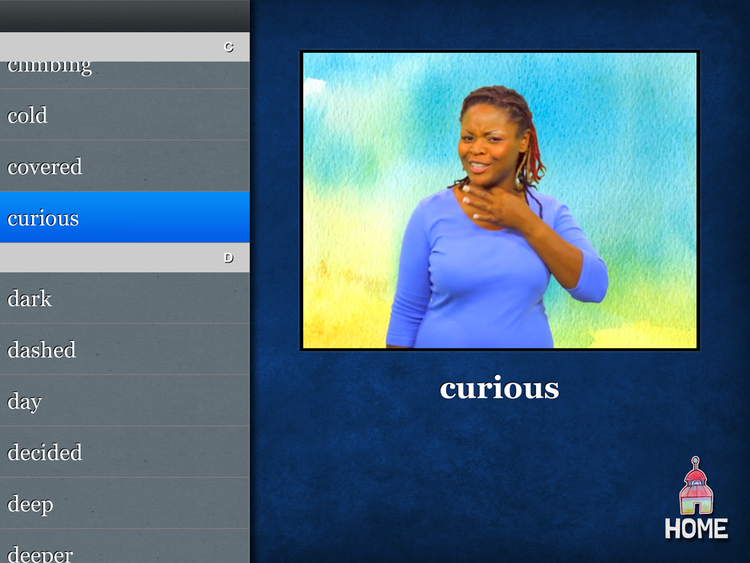OUR RESEARCH BASED DESIGN
Why Are We Doing This?
Every child loves, and deserves, a great story. Great stories invite children into our vast world, encouraging new ways to imagine and then leading them down the path to reading and learning. The inspiration behind the VL2 Storybook Apps comes from the belief that there are many ways to tell a great story.
Our way is to provide exciting and captivating stories in both American Sign Language (ASL) and English. Children can watch the story in ASL or start reading it in English. At any point throughout the story in English, children can tap the screen to watch that part of the story in ASL. Children can also touch specific English words to see them fingerspelled as well as being signed in ASL.
Several major research studies on bilingualism and visual learning show that learning two languages leads to greater literacy skills in both languages, and the younger, the better. Young visual learners, deaf and hearing, do benefit tremendously from continued exposure to ASL and written English.
We love stories. And we love sharing great stories—especially now that we have this new form of visual storytelling in ASL and English!
The Importance of Fingerspelling in Learning to Read
For young and emerging Deaf readers, the role of fingerspelling is important. Fingerspelling bridges ASL and English. It provides a rich gateway into ASL’s "visual phonology" for emerging readers and also strengthens children’s sound phonological decoding of the English text.
Frequent fingerspelling helps children become better readers and facilitates English vocabulary growth. Deaf and hard of hearing readers who are good at fingerspelling are also good readers, and vice versa! Of course, the same holds for frequent signing to children!
Content-Based ASL Signs
All the ASL signs used in each storybook app are content based, meaning that the signs used fit the context. In other words, one shouldn't assume that the ASL sign for "run" is the same in all contexts; "running" can refer to a person running, a car motor running, someone's nose running, and so on. The sign for "run" in all these contexts would be different. This is important to know, especially for those learning ASL.
An example of a content-based ASL sign from The Baobab is the sign for "bounce". ASL sign can adopt the iconicity of the object that is bouncing. For instance, if it was a ball bouncing, the hand will adopt a clutching shape (as if holding an invisible ball) and bounce the ball. But if it was an animal, then the hand will change into two fingers (as to depict a "person"), and use bounce movements to show an animal or person bouncing. So, therefore, if you wish to communicate a ball was bouncing, you should change the handshape to suggest, or show, a ball bouncing rather than using the same sign from The Baobab for "bouncing". Enjoy reading and learning!
Exciting features!
Stories told in sign language by fluent Deaf storytellers.
Easy & accessible navigation designed for children.
Page-by-page sign language videos supporting the printed sentences text.
Rich interactive narrative with direct English to ASL vocabulary video translation.
120+ new vocabulary words with each app. Parents can learn new ASL signs along with their child.
Vivid and captivating illustrations by Deaf artists.
App design is based on proven research in bilingualism and visual learning. The ability to view the story in both, ASL and English leads to greater literacy skills in both languages in young children.
Apps in other languages - our international editions:
Our storybook apps program has expanded globally. We have partners through our CoLab program, to work with Deaf-led teams in other countries in developing storybook apps in their sign languages and written languages, because we all share the same goal: ensuring our Deaf children have access to language, and become skilled readers.
Please note that our research-based design applies to other language editions. For instance, in the Norwegian version of The Baobab, the app presents page-by-page Norwegian Sign Language videos with sentences in written Norwegian, and vocabulary videos shows signed and fingerspelled words in Norwegian Sign Language.
About Motion Light Lab
Motion Light Lab (ML2) is a space where creative literature and digital technology intersect to create immersive learning experiences. Our projects focus on how scientific discoveries and research foundations made by the Visual Language and Visual Learning Center can be translated into fun, educational learning tools and resources for visual learners. The digital frontier is our playground.
About Visual Language and Visual Learning
Visual Language and Visual Learning (VL2) is a Science of Learning Center in the United States, funded by the National Science Foundation, and is based at Gallaudet University in Washington D.C. VL2 is a collaborative effort with more than 15 labs nationwide, all interested in the visual learning process. We seek to understand more about how learning through visual processes, visual language, and visually based social experience contributes to the development of language, reading, and literacy, and in ways that provide fascinating cognitive and linguistic advantages to the young visual learner. We seek this knowledge for the benefit of all humans.







